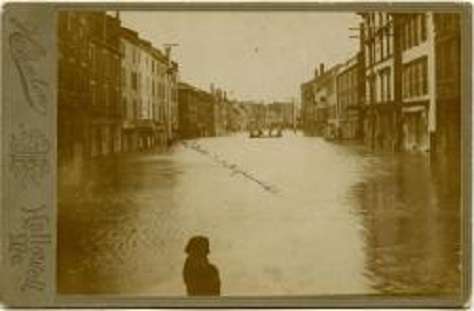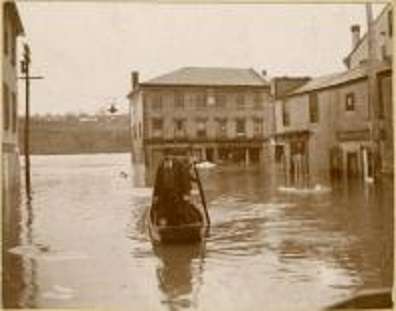Covers towns roughly within 50 miles of Augusta.
EVENTS: SMASH proudly presents “A Midsummer Night’s Dream”
/0 Comments/in Central ME, Events, School News/by Website Editor Southern Maine Association of Shakespearean Homeschoolers (SMASH) proudly presents A Midsummer Night’s Dream, February 2 & 3 at 6:30pm and February 4 at 2pm. It will be performed at Cumston Hall in Monmouth, Maine. Tickets are available at the door or online here. For more information, email smashmaine@jimdofree.com.
Southern Maine Association of Shakespearean Homeschoolers (SMASH) proudly presents A Midsummer Night’s Dream, February 2 & 3 at 6:30pm and February 4 at 2pm. It will be performed at Cumston Hall in Monmouth, Maine. Tickets are available at the door or online here. For more information, email smashmaine@jimdofree.com.Legislative Report as of Friday, January 13, 2023
/0 Comments/in Central ME, Kennebec County, Politics/by Website Editor
(photo by Eric W. Austin)
Legislative bills submitted by area senators & representatives as of Friday, January 13, 2023.
L.D. 93, H.P. 61
An Act to Ensure Access for All Caregivers to Diaper Changing Stations in Public Restrooms. (Presented by Representative COLLAMORE of Pittsfield)
L.D. 95, H.P. 63
An Act Concerning the Membership of the State Emergency Response Commission and Fees for Registering Facilities Required to Report to That Commission. Presented by Representative CYRWAY of Albion)
L.D. 96, H.P. 64
An Act to Ensure Release of Relevant Background Investigation Material to Current Employers of Law Enforcement and Corrections Officers. (Presented by Representative CYRWAY of Albion)
L.D. 111, H.P. 79
An Act Requiring the State to Pay a Share of a Retired State Employee’s or Retired Teacher’s Premium for Medicare Part B Under Medicare Advantage. (Presented by Representative SHAGOURY of Hallowell)
L.D. 119, S.P. 58
An Act to Clarify the Boundary Between Waldo and Knox Counties in Penobscot Bay. (Presented by Senator CURRY of Waldo)
L.D. 121, S.P. 60
An Act to Expand Health Insurance Coverage to Certain State Employees. (Presented by Senator HICKMAN of Kennebec)
L.D. 125, S.P. 64
An Act to Allow Driver Education Instructors to Administer Driver’s License Road Tests. (Presented by Senator POULIOT of Kennebec)
L.D. 126, S.P. 65
An Act to Improve the Fairness of Adaptive Management Study Moose Hunt Permits by Exempting Those Permittees from the 4-year Limitation on Receiving Another Permit. (Presented by Senator POULIOT of Kennebec)
L.D. 139, H.P. 85
An Act to Increase the Liability of Parents and Legal Guardians for Damage by Children. (Presented by Representative RUDNICKI of Fairfield)
L.D. 140, H.P. 86
An Act to Amend the Laws Governing the Right to Counsel for Juveniles and Due Process for Juveniles. (Presented by Representative RUDNICKI of Fairfield)
L.D. 147, S.P. 76
An Act to Increase the Amount of Money Allowed to Be Raised for a Charitable Purpose by Certain Raffles. (Presented by Senator LaFOUNTAIN of Kennebec)
L.D. 148, S.P. 77
An Act to Allow Detention of Juveniles for Certain Acts. (Presented by Senator LaFOUNTAIN of Kennebec)
L.D. 162, H.P. 103
An Act to Establish a Substance Use Disorder Hotline and Consultation and Clinical Supervision Program. (Presented by Representative MADIGAN of Waterville)
L.D. 164, H.P. 105
An Act to Fund the Lake Restoration and Protection Fund. (Presented by Representative BRIDGEO of Augusta)
L.D. 165, H.P. 106
An Act to Increase the Governor’s Salary. (Presented by Representative BRIDGEO of Augusta)
L.D. 176, H.P. 117
An Act to Increase the Safety of Patients and Staff at the Dorothea Dix Psychiatric Center and the Riverview Psychiatric Center. (Presented by Representative MADIGAN of Waterville)
L.D. 189, S.P. 93
An Act to Include an Expanded Archery Permit in the Super Pack License Issued by the Department of Inland Fisheries and Wildlife. (Presented by Senator POULIOT of Kennebec)
Copies of the Bills may be obtained from the Document Room, First Floor, State House, Augusta, Maine 04333-0002 – Ph: 207-287-1408. Bill text, bill status and roll call information are available on the Internet at http://legislature.maine.gov/LawMakerWeb/search.asp.
The Weekly Legislative Report is also available on the Internet at the House home page at http://legislature.maine.gov/house/house/ under the “Documents” tab.
Big Brothers, Big Sisters needed for 100 waiting Littles
/0 Comments/in Central ME, Community, Kennebec County, Waterville/by Website Editor
Little Sister Ryder Perkins meets with her Big Sister Hayley SooHoo once a week to chat while they draw, color, takes walks, and sometimes even learn new dances together. Their friendship was created through Big Brothers Big Sisters of Mid-Maine’s longstanding, one-to-one mentoring program that matches children facing adversity with positive role models. (contributed photo)
by Monica Charette
Big Brothers Big Sisters of Mid-Maine (BBBSMM) kicks off the new year and National Mentoring Month in January with an effort to recruit adult volunteers in the community to serve as mentors to 100 children waiting to be matched.
“Bettering yourself in the new year is a fantastic goal,” Big Brothers Big Sisters of Mid-Maine Interim Executive Director Mae Slevisky, says. “This year, we encourage people to think about how they can do that by also bettering their community—by becoming a Big Brother or Big Sister.”
According to Slevinsky, there has never been a more critical time for mentoring.
“The events of the past few years have taken their toll on our most vulnerable citizens—our children. The isolation brought on by the COVID-19 pandemic has hampered the social and academic progress of many kids, and many more are experiencing mental health challenges,” she said. “Kids need mentors now more than ever, to help them navigate challenges, open up doors of opportunity, and give them additional support they may need to excel in school and in their communities.”
According to Slevinsky, BBBS of Mid-Maine currently has 100 youth in its seven-county service area waiting to be matched with a mentor. Becoming a Big means committing to spending a couple of hours a week with a young person doing things you and your Little like to do, like playing outside, visiting the library, or taking a walk, she said. Matches also explore new activities together, like visiting a museum or skiing for the first time. “It’s about having fun, being a friend, and nurturing a child’s greatest potential.”
Adult mentors are interviewed, screened and trained, and receive ongoing support from BBBS of Mid-Maine professional staff, including regular match support meetings to ensure safety and help strengthen relationships. Successful volunteers are responsible, caring adults, who enjoy working with youth of all ages and backgrounds, have excellent listening and communication skills, are patient, willing to learn, and share in the BBBS mission of igniting the power and promise of local youth.
To learn more about Littles waiting, follow BBBS of Mid-Maine’s weekly “Waiting Wednesday” Facebook posts. For information on how to become a Big or enroll a child, visit bbbsmidmaine.org, email info@bbbsmidmaine.org or call 207-236-BBBS (2227).
Legislative bills submitted by area senators and representatives as of Friday, Jan. 6, 2023
/0 Comments/in Central ME, Community, Kennebec County/by Website EditorL.D. 17, H.P. 21
An Act to Amend the Membership Requirements of the State Claims Commission. (Presented by Representative WHITE of Waterville)
L.D. 18, H.P. 22
An Act to Provide Ongoing Funding for up to 2 Years of Community College for Certain Maine Students. (Presented by Representative BRIDGEO of Augusta)
L.D. 24, S.P. 16
An Act to Prohibit Open Burning Under a Red Flag Warning and Regulate Recreational Campfires. (Presented by Senator CURRY of Waldo)
L.D. 25, S.P. 17
An Act to Provide Indigenous Peoples Free Access to State Parks. (Presented by Senator HICKMAN of Kennebec)
L.D. 27, S.P. 19
An Act to Align Maine’s Lead Abatement Law with Federal Definitions and to Clarify Lead Abatement Licensing and Certification Requirements. (Presented by Senator POULIOT of Kennebec)
L.D. 30, S.P. 22
An Act to Increase the Statutory Fee for Defensive Driving Courses. (Presented by Senator FARRIN of Somerset)
L.D. 31, S.P. 23
An Act to Allow the Commissioner of Transportation to Reduce Speed Limits at Construction Sites with Input from Municipalities and Utilities. (Presented by Senator FARRIN of Somerset)
L.D. 34, S.P. 26
An Act to Require a Person to Show Photographic Identification for the Purpose of Voting. (Presented by Senator POULIOT of Kennebec)
L.D. 37, S.P. 29
An Act to Amend the Laws Governing Property Tax Stabilization for Senior Citizens to Eliminate the Requirement for an Annual Application. (Presented by Senator POULIOT of Kennebec)
L.D. 40, S.P. 32
An Act to Amend the Cannabis Laws. (Presented by Senator HICKMAN of Kennebec)
L.D. 42, S.P. 34
An Act Regarding the Commissioner of Corrections’ Role in Death Benefit Determinations and Regarding Training for Corrections Officers. (Presented by Senator LAFOUNTAIN of Kennebec)
L.D. 46, S.P. 38
An Act to Amend the Statutory Balance Limit on the Finance Authority of Maine’s Loan Insurance Reserves. (Presented by Senator CURRY of Waldo)
L.D. 47, S.P. 39
An Act to Amend the Law Governing Licensing Actions of the Emergency Medical Services’ Board. (Presented by Senator LAFOUNTAIN of Kennebec)
L.D. 55, H.P. 30
An Act to Move the Headquarters for the Department of Inland Fisheries and Wildlife. (Presented by Representative BRIDGEO of Augusta)
L.D. 63, H.P. 38
An Act to Clarify That Certain Imported Motor Vehicles Are Not Off-road Vehicles. (Presented by Representative RUDNICKI of Fairfield)
L.D. 64, H.P. 39
An Act to Ensure In-state Tuition for Postsecondary Students Who Are Registered to Vote in the State. (Presented by Representative RUDNICKI of Fairfield)
L.D. 65, H.P. 40
An Act to Require That Printing Services Provided to the General Public by the University of Maine System Be Provided at Market Rates. (Presented by Representative RUDNICKI of Fairfield)
L.D. 83, S.P. 50
An Act to Clarify State Policy Regarding the Use of Cannabis Paraphernalia in the Maine Medical Use of Cannabis Act. (EMERGENCY) (Presented by Senator HICKMAN of Kennebec)
Copies of the Bills may be obtained from the Document Room, First Floor, State House, Augusta, Maine 04333-0002 – Ph: 207-287-1408. Bill text, bill status and roll call information are available on the Internet at http://legislature.maine.gov/LawMakerWeb/search.asp.
The Weekly Legislative Report is also available on the Internet at the House home page at http://legislature.maine.gov/house/house/ under the “Documents” tab.
Up and down the Kennebec Valley: Kennebec River floods – Part 1
/0 Comments/in Central ME, Hallowell, Kennebec County, Local History, Maine History, Up and Down the Kennebec Valley/by Mary Growby Mary Grow
When this historical series started in the spring of 2020 as a way to distract writer and readers from the Covid-19 pandemic, part of the plan was a survey of historic local disease outbreaks and other disasters. The latter have come to include weather, floods, fires and other destructive events, man-made or a combination.
January in Maine seems like a good time to talk about weather, including floods. Some local historians collected a lot of information on the topic; others paid it little attention. Here is your writer’s proposal to share some past events.
Of great importance along the Kennebec River were – and still are – the frequent floods, often called “freshets.” Kennebec River freshets, interrelated with human attempts to control the water and sometimes including tributary streams, will be the first topic.
(Wikipedia: “The term freshet is most commonly used to describe a spring thaw resulting from snow and ice melt in rivers located in upper North America.”)
Then there is the famous “Year without a summer,” 1816, for a second topic.
Other weather-related events that have distressed central Kennebec Valley residents over the years, were recorded and have not been covered under the prior two topics will be a third topic.
* * * * * *
To the Kennebec Valley’s Native American inhabitants, the Kennebec River was a main source of transportation and communication up-river and down; a barrier, though one that could be overcome in various ways; a source of food; and a recreational resource. Early European inhabitants further counted the river as a natural dividing line, for example when Waterville was set off from Winslow and Sidney from Vassalboro; and a source of power for industry. To everyone, it was sometimes a threat.
Your writer found two books especially good sources of information on the river’s interactions with the Europeans who settled along its banks. The older is James North’s history of Augusta, published in 1870; the newer is Ernest Marriner’s 1954 Kennebec Yesterdays.
North mentioned the Kennebec in the first sentence of his book, when French explorer Sieur de Monts visited the mouth of the river in 1604. Marriner’s first chapter is titled Our Lady Kennebec; he described the river as a “gracious lady” who intermittently loses her temper and wreaks havoc.
After Europeans discovered the mouth of the river, exploration extended upstream. A series of land grants from the British monarchy authorized settlements, starting with the Plymouth Colony in Massachusetts. (Your writer has avoided trying to untangle the history of early land titles in the Kennebec Valley.)
The Plymouth settlers started trading with Kennebec Valley Native Americans, especially for furs. Their first three trading posts, established around 1628, were at the mouth of the river; in the Richmond/Swan Island area; and at Cushnoc, on the east bank of the river in what is now Augusta.
Trade was broken off in the 1650s. The valley was mostly devoid of Europeans, mainly because of opposition from the Native Americans and their French supporters in Canada, until Fort Halifax and Fort Western were built in 1754.
By the Feb. 19, 1763, Treaty of Paris, the French abandoned their claim to northern North America (they kept Louisiana until President Thomas Jefferson bought it in 1803). Without French backing, Kennebec Valley Native Americans moved north to join other tribes.
British settlers quickly replaced them. North listed about 100 families around Fort Western by 1762. On April 26, 1771, the Massachusetts legislature incorporated the towns of Hallowell, Vassalboro, Winslow and Winthrop.
(Later boundary changes took Augusta, Chelsea and most of Farmingdale and Manchester out of Hallowell; divided Sidney from Vassalboro, and Waterville from Winslow, separated by the river; and took Readfield from Winthrop.)
Hallowell residents built their log houses and laid out early roads on both banks of the Kennebec, which they apparently crossed at will. North wrote that the 1773 annual town meeting began on March 15 in a house on the west shore; after the first decisions, voters adjourned until March 16, when they reassembled in a house on the east shore.
Henry Kingsbury’s Kennebec County history has the earliest mention of a freshet, not on the Kennebec’s main stem but on Bog – later Hastings – Brook, which flows in from the west in what was then Vassalboro (now Sidney). (This brook was in the southern part of town; it might have been the one now called Goff Brook.)
An early settler named John Marsh built a sawmill and a grist mill on Bog Brook, between the road (the present West River Road, also Route 104, approximately follows this road) and the river. Both mills “were carried away by a freshet and an ice jam in 1774.”
Kingsbury wrote that another early settler, Thomas Clark, had two bags of meal in the grist mill. He rescued one; saying his family needed the second bag, he went back into the mill “just as the resistless torrent bore it and him to destruction.”
North’s first mention of a Kennebec flood was in April 1789, after an April 7 rainstorm. Apparently a minor flood, it nonetheless set a destructive precedent: a six-month-old bridge over Bond Brook (formerly Ballard’s Brook), which enters the Kennebec from the west at the north end of Water Street, was washed out, and Ephraim Ballard’s house and dam were damaged.
On Feb. 3, 1791, North wrote, Hallowell residents experienced “the greatest freshet…since the settlement of the country.” After bare ground and an ice-free river at the end of 1790, the river froze and a foot of snow fell by Jan. 4. There was more snow at the beginning of February; it changed to rain as the wind blew from the southeast.
Again the area around the mouth of Bond Brook was hard-hit. A store was flooded, and the house where Martha and Ephraim Ballard’s son was living was knocked off its foundation by four feet of water carrying cakes of ice.
During the winter of 1794 – no specific date – and on Feb. 5, 1795, North wrote that ice jams in the river led to brief flooding. In February 1806, a combination of rain and ice-jams raised water levels, in Bond Brook early in the month and in the Kennebec in mid-month.
The week of March 21, 1826, began with thunderstorms and ended with “torrents of rain” falling on almost two feet of ice on the Kennebec. Saturday morning, March 26, North wrote, the ice broke up, floated down to Hallowell and jammed against Brown’s Island, creating a barricade that brought the river 20 feet above normal high water in Augusta by Sunday (while downstream in Gardiner the level was below normal).
This flood took out parts of bridges in Norridgewock and Waterville. In Augusta it damaged a mill on Bond Brook, floated away stockpiled lumber and flooded cellars. Buildings on Hallowell’s Main Street had first floors as well as cellars water-filled, and much merchandise was ruined. “Capt. Wyman’s sloop was driven into Mr. Elias Bond’s garden”; other ships were carried downriver to join the jam at Brown’s Island.
Late Sunday afternoon, March 27, the jam let go. A “compact mass” of ice, trees, logs, lumber and five schooners” tore past Gardiner and hung up again a mile or two south, raising the river “to an unprecedented height” at Gardiner.
The next year, 1827, Augusta was chosen as the capital of Maine, which had become a separate state from Massachusetts in 1820. The Maine legislature began its first session in the new state house on Wednesday, Jan. 4, 1832. In May 1832 occurred what North, Edwin Carey Whittemore in his centennial history of Waterville and Marriner agreed was the worst flooding Europeans had seen on the Kennebec to that date.
North wrote that central Maine got a lot of snow in the winter of 1831-32, and spring was late – the ground was still frozen early in May. A sudden warming beginning May 8 started melting the snow. After rain, at first moderate and then “in torrents” from Thursday night, May 17, through Tuesday morning, May 22, “the Kennebec was swollen to an unexampled height.”
North listed damage as including destruction of two bridges in Waterville (part of one came downstream past Augusta); all but one of that town’s sawmills knocked off their foundations; on Bond Brook, a “valuable fulling-mill” and – again – the bridge swept away.
He wrote: “The Redington saw mill [from Waterville] came floating along, upright and high out of the water, being buoyed up by lumber piled in it. The formidable looking mass as it rapidly approached was expected to seriously damage if not remove the [Augusta] bridge. It struck, stopped for a moment, the gable of the building was crushed, and it sunk down into the water and passed under” without harming the bridge.”
However, the water damaged the east end of the bridge enough so that it was unsafe for carriages for two weeks.
Whittemore dated the Redington mill and the dam on which it stood to 1792. The bridge that sailed downriver was the Ticonic bridge, a privately-constructed wooden toll bridge dating from the early 1820s. It had been damaged in the “great freshet” in March 1826 and promptly repaired.
To Whittemore, the 1832 “great freshet” had not been equaled when he finished editing his history in 1902.
Kingsbury wrote that the bridge across the Sebasticook in Winslow was also taken out. A private company replaced it with a toll bridge in 1834; in 1866, the town bought it for $2,500 and abolished the tolls.
Marriner described his Lady Kennebec in May 1832 (and again in 1936) as a “demon of wrath” who did millions of dollars in damage. Much of his description of the flood is based on an 1891 report by a Winslow-born engineer named Timothy Otis Paine, employed in the interest of the Hollingsworth and Whitney Company to date high-water marks.
Paine, born in a house uphill from the Sebasticook River and Fort Halifax and eight years old in 1832, remembered watching the Kennebec cover Lithgow Street and continue rising. He knew other people who measured subsequent floods by how close the water came to 1832 levels, as recorded on riverside trees and other features.
Why, Paine asked, did the river rise so dramatically in 1832? He discounted two theories: the rumor that a dam holding back Moosehead Lake had breached, because there was no dam at the foot of the lake in 1832; and an elderly resident’s theory that the persistent northeast wind had blown water out of the lake to supplement the rainfall.
Marriner wrote that Paine decided the flood was so bad because large logs being floated to sawmills got jammed in Fairfield, against the foundations of “the three bridges between Fairfield and Benton” and around Bunker Island. When the jam broke and moved forcefully downriver, pent-up water followed in a series of waves, each higher than the one before.
This information does not match the Fairfield Historical Society’s bicentennial history. That book contains a single reference to the 1832 flood, a quotation from the Dec. 17, 1901, Fairfield Journal saying the Dec. 16, 1901, flood was “the worst freshet since 1832.”
The Fairfield history dates the first dam across the west channel of the Kennebec, between downtown Fairfield (then Kendall’s Mills) and Mill Island, to the late 1780s, but there is no reference to a dam in Marriner’s account of the flood. The Fairfield history also says the bridges linking Fairfield and Benton were built in 1848, so they could not have held back logs in 1832.
Marriner retold an odd story from Paine. He wrote that a flock of sheep pastured on the east bank of the Kennebec “just above the Pond Hole,” with “an old flat boat turned bottom up” as their shelter, lived through the flood.
In the course of trying to find out how they survived, Paine decided the “Pond Hole” was neither a pond nor a hole, merely a piece of very rough ground. Why that interpretation saved the sheep, Marriner did not explain.
Main sources
Fairfield Historical Society, Fairfield, Maine 1788-1988 (1988).
Kingsbury, Henry D., ed., Illustrated History of Kennebec County Maine 1625-1892 (1892).
Marriner, Ernest, Kennebec Yesterdays (1954).
North, James W., The History of Augusta (1870). Whittemore, Rev. Edwin Carey, Centennial History of Waterville 1802-1902 (1902).
Websites, miscellaneous.
Local scouting district selects officers for 2023
/0 Comments/in Central ME, Community, Kennebec County/by Chuck Mahalerisby Chuck Mahaleris
The Kennebec Valley District of the Scouting program held its annual meeting and selected a slate of officers to lead them in 2023.
Chuck Mahaleris, of Augusta, was elected District Chairman joining District Commissioner Eric Handley, of Sidney, and District Executive Michael Perry, of Jay, as the Key Three for the Scouting District. Joseph Poulin, of Oakland, and Charlie Matthews, of Fairfield, were elected Vice Chairmen.
The annual meeting was held on January 4 at the Pleasant Street United Methodist Church, in Waterville. Kennebec Valley District, one of four such districts in Pine Tree Council, delivers the programs of Scouting to youth in Franklin, Kennebec, Knox, Lincoln and Somerset counties. The District Committee members provide such services as Membership Development, Fundraising, District Activities, Camping Programs, Leader Training, and the administration of Youth Advancement.
The officers and the slate of members at large were introduced for approval by the nominating committee which included Scouting leaders from all five counties under the leadership of Rick Denico, of Vassalboro. Denico is a member of the Pine Tree Council Executive Board and former District Chairman. All were elected unanimously and took office immediately.
“The Covid Pandemic and the national lawsuit were hard on Scouting,” Mahaleris said. “Our Packs and Troops weren’t allowed to meet for quite some time and it was almost impossible to recruit new Scouts when schools and churches were under tight restrictions. But things are starting to change. By the end of December, it was announced that nationally Scouting was serving 1,042,000 youth.
Locally a new Law Enforcement Explorer Post was started in Rangeley with the U.S. Customs and Border Patrol and later this month they will be starting a new Cub Scout Pack in Winthrop with the help of the American Legion Post #40.”
Mahaleris has been a registered member of Scouting for more than 40 years since first joining as a Cub Scout and earned Eagle in 1985. He works as a staff assistant for U.S. Senator Susan Collins, and before that spent a decade as a Professional Scout in Massachusetts and Rhode Island where he ran two different Scout camps.
Poulin is the President/Owner of Alpine Consulting & Metal Works LLC. He has been involved in local scouting since 1990, starting as a Webelos and earned Eagle Scout rank in 1997. Joe is the Assistant Scoutmaster of Troop #454 for 20-plus years and is the Pine Tree Council Training Chairman. He has served as Day Camp Program Director at both Camp Hinds and Bomazeen and is scheduled to be the 2023 WoodBadge Course Director in September.
Matthews, who is retired, is a former district chairman and has more than 55 years of scouting experience including many years as the Scoutmaster of Troop #460, in Fairfield. Matthews was a youth member of Troop #470, in Fairfield, from 1953 to 1955 and then from 1967 through 2019 he served as Scoutmaster of Fairfield Troop #460.
“I have enjoyed working with young people and see them go from a new scout who wasn’t sure of himself to become a leader with confidence in himself.”
Eric Handley works for Aubuchon Hardware as their POS manager where he manages a team that installs and supports the IT equipment and training for all Aubuchon stores. Eric joined scouting at age seven in 1974 as a Wolf Cub scout and climbed to Life Scout before his family moved in 1982. He became active again in 2006 when his son became a Tiger Cub with Pack #401, in Sidney. Currently he is also serving as the Scoutmaster of Troop #401, in Sidney. This is the beginning of his second year as District Commissioner. In this role, he oversees the Unit Commissioner staff who provide direct support to the Packs, Troops, Venture Crews and Explorer Posts of the District. The District Commissioner also oversees the delivery of the monthly Roundtable Scout Leader programs. The District Commissioner is recommended by the Nominating Committee for approval by the Pine Tree Council Executive Board.
“This is going to be an exciting scouting year,” Mahaleris said. “The Klondike Derby is coming right up followed by the Pinewood Derby. The Merit Badge College is returning in February for the first time since Covid hit and this Spring we will be having a camporee at the Skowhegan Drive-In. This summer will see dynamic programs at both Camp Hinds and Bomazeen and before you know it we will be looking at the Haunted Woods and Fall Camporee programs.
“Youth have fun in scouting programs and while that is happening they are developing character, learning to become better citizens, and training to be tomorrow’s leaders while working on their personal fitness. All of this is only possible because of the great work of our scouting volunteers.”
Those interested in joining scouting can contact District Executive Michael Perry at (207) 517-4378 or Michael.Perry218@scouting.org to find the nearest scouting program to them. Scouting is open to boys and girls from kindergarten to age 18.
CENTRAL ME: Report shows 37% of Maine homes with high Radon levels
/0 Comments/in Central ME, Community, News/by Website Editor During Radon Action Month in January, the American Lung Association urges everyone to test their home for radon.
During Radon Action Month in January, the American Lung Association urges everyone to test their home for radon.
Radon is the second leading cause of lung cancer and the “State of Lung Cancer” report reveals that it is detected at high levels in about 37% of homes in Maine. During January for Radon Action Month, the American Lung Association in Maine is urging everyone to test their home for radon.
Radon is a naturally occurring radioactive gas emitted from the ground. Radon can enter a home through cracks in floors, basement walls, foundations and other openings. Exposure to radon is the second leading cause of lung cancer in the United States and is the leading cause of lung cancer in people who have never smoked.
Here in Maine, about 37% of radon test results equal or exceed the Environmental Protection Agency (EPA) action level of 4 pCi/L, according to the Lung Association’s “State of Lung Cancer” report.
“Radon is responsible for an estimated 21,000 lung cancer deaths every year and is the leading cause of lung cancer in people who have never smoked. Since radon is odorless, tasteless and colorless, the only way to detect radon in your home is to test the air. This is why it is critical for everyone to test their home,” said Lance Boucher, Director of Advocacy for the Lung Association. “Radon Action Month is the perfect time to learn more about this dangerous gas and take action to protect yourself and your loved ones.”
Do-it-yourself radon test kits are simple to use and inexpensive. EPA urges anyone with radon levels at or above 4 picoCuries per liter (pCi/L) to take action to install a mitigation system in their homes. Both the EPA and the American Lung Association recommend that mitigation be considered if levels are greater than 2 pCi/L. After high levels are detected, a radon mitigation system should be installed by a radon professional.
A typical radon mitigation system consists of a vent pipe, fan, and properly sealing cracks and other openings. This system collects radon gas from underneath the foundation and vents it to the outside of your home. If you need to have a radon mitigation system installed, contact your state radon program for a list of certified radon mitigation professionals.
Learn more about radon testing and mitigation at www.Lung.org/Radon.
The American Lung Association is the leading organization working to save lives by improving lung health and preventing lung disease through education, advocacy and research. The work of the American Lung Association is focused on four strategic imperatives: to defeat lung cancer; to champion clean air for all; to improve the quality of life for those with lung disease and their families; and to create a tobacco-free future. For more information about the American Lung Association, which has a 4-star rating from Charity Navigator and is a Platinum-Level GuideStar Member, or to support the work it does, call 1-800-LUNGUSA (1-800-586-4872) or visit:? Lung.org.
St. Cecilia Chamber Choir begins auditions
/0 Comments/in Central ME, Community/by Website Editor St. Cecilia Chamber Choir is holding auditions for all voice parts as they begin preparing for their May and June concerts. On May 6 and 7, St. Cecilia will present Bach to the Future. The featured work on the program will be the Bach motet Lobet den Herrn, alle Heiden. Selections from Fauré’s Messe basse for three-part women’s chorus will also be performed.
St. Cecilia Chamber Choir is holding auditions for all voice parts as they begin preparing for their May and June concerts. On May 6 and 7, St. Cecilia will present Bach to the Future. The featured work on the program will be the Bach motet Lobet den Herrn, alle Heiden. Selections from Fauré’s Messe basse for three-part women’s chorus will also be performed.
On June 10 and 11, St. Cecilia will join with Tapestry Singers to perform John Rutter’s Gloria and Requiem, two of his more popular works.
St. Cecilia Chamber Choir is a fully-auditioned community group of singers, from talented youth to seasoned performers. They perform the very finest challenging choral repertoire spanning the centuries from medieval to modern, under the direction of husband-and-wife team Linda Blanchard and Sean Fleming, of Damariscotta. In the English choral tradition, they sing with a straight tone, enabling attention to fine-tuning rich harmonies. Much of the repertoire is a cappella, and they frequently are accompanied by a professional chamber orchestra. They present two to three concerts per year, typically in December and May, with the additional concert this year in June.
They are a dedicated and friendly bunch, eager to welcome new members, and especially encourage gifted students to audition. Rehearsals are high-energy and challenging. “We work hard,” says Blanchard, “but we keep the rehearsals upbeat and fun. We provide practice materials to use at home, so singers can come to rehearsal feeling prepared and ready to go!”
Singers wishing to audition should have good vocal control, and sopranos and altos should be able to sing without vibrato. The ability to read music is preferred, but those who cannot read may participate by spending extra time learning the music at home with the aid of provided practice materials.
Rehearsals are Wednesday evenings at 6:45 p.m., starting on Wednesday, January 18, at St. Andrew’s Church, on Glidden St., in Newcastle. Choristers are vaccinated.
To schedule an audition, call Linda Blanchard at (207) 380-2768 or email audition@ceciliachoir.org. For more information about the Choir, please visit our website at ceciliachoir.org.
HealthReach celebrates 2022 as a Year of Excellence
/0 Comments/in Central ME, Community/by Website EditorAs we look forward to the New Year, it is always good to reflect on the past – to learn what lessons we can, and to recognize success so it can be expanded upon. The staff of HealthReach Community Health Centers are pleased to celebrate many successes from 2022. Here are a few recognitions we are proud to share with our communities:
- HealthReach as an organization was once again recognized by the US Department of Health and Human Services, Health Resources & Services Administration (HRSA), as a Patient-Centered Medical Home (PCMH), as a Health Center Quality Leader, and for Advancing Health Information Technology (HIT) for Quality.
- Dr. Amy Madden, HealthReach Medical Director, was recognized by Home Hope & Healing as their Physician of the Month for the month of May 2022. We are pleased to see Dr. Madden’s dedication to her patients and quality of care recognized by external partners.
- Rep. John “Jack” Ducharme III, HealthReach Board member, was recognized by the Maine Primary Care Association and received the MPCA 2022 President’s Award for his efforts to support community health centers across Maine. Jack rallied members of the Maine House of Representatives to improve the financial sustainability of rural healthcare.
Special thanks go to Amy, Jack, and the rest of the HealthReach team for their extraordinary accomplishments in 2022.
Residents of Central and Western Maine have enjoyed quality care at HealthReach practices for nearly five decades. If you are seeking a new healthcare provider and health home, consider your local HealthReach health center in Albion, Belgrade, Bethel, Bingham, Coopers Mills (Whitefield), Kingfield, Livermore Falls, Madison, Rangeley, Richmond, or Strong. HealthReach Community Health Centers is a group of 12 federally-qualified health centers located across Central and Western Maine.
Dedicated clinicians deliver high-quality healthcare – inclusive of behavioral health and dental services – to citizens from 9 of Maine’s 16 counties. To ensure access for everyone, HealthReach accepts Medicare, MaineCare, and major insurance providers. In addition, an Affordable Care Program is available to both uninsured and underinsured residents. Assistance is available for applications to programs that help with the cost of your healthcare and medications, including Maine’s Health Insurance Marketplace.
A private, nonprofit with a 48-year history, HealthReach is funded by patient fees, grants, and by the Health Resources and Services Administration (HRSA) of the U.S. Department of Health and Human Services (HHS) as part of an award totaling $4,815,606 with 82.2 percent financed by non-governmental sources. The contents above are those of the author, and do not necessarily represent the official views of or an endorsement by, HRSA, HHS, or the U.S. Government.
Interesting links
Here are some interesting links for you! Enjoy your stay :)Site Map
- Issue for April 3, 2025
- Issue for March 27, 2025
- Issue for March 20, 2025
- Issue for March 13, 2025
- Issue for March 6, 2025
- Issue for February 27, 2025
- Issue for February 20, 2025
- Issue for February 13, 2025
- Issue for February 6, 2025
- Issue for January 30, 2025
- Issue for January 23, 2025
- Issue for January 16, 2025
- Issue for January 9, 2025
- Issue for January 2, 2025
- Issue for December 19, 2024
- Issue for December 12, 2024
- Issue for December 5, 2024
- Issue for November 28, 2024
- Issue for November 21, 2024
- Issue for November 14, 2024
- Issue for November 7, 2024
- Issue for October 31, 2024
- Issue for October 24, 2024
- Issue for October 17, 2024
- Issue for October 10, 2024
- Issue for October 3, 2024
- Sections
- Our Town’s Services
- Classifieds
- About Us
- Original Columnists
- Community Commentary
- The Best View
- Eric’s Tech Talk
- The Frugal Mainer
- Garden Works
- Give Us Your Best Shot!
- Growing Your Business
- INside the OUTside
- I’m Just Curious
- Maine Memories
- Mary Grow’s community reporting
- Messing About in the Maine Woods
- The Money Minute
- Pages in Time
- Review Potpourri
- Scores & Outdoors
- Small Space Gardening
- Student Writers’ Program
- Solon & Beyond
- Tim’s Tunes
- Veterans Corner
- Donate






